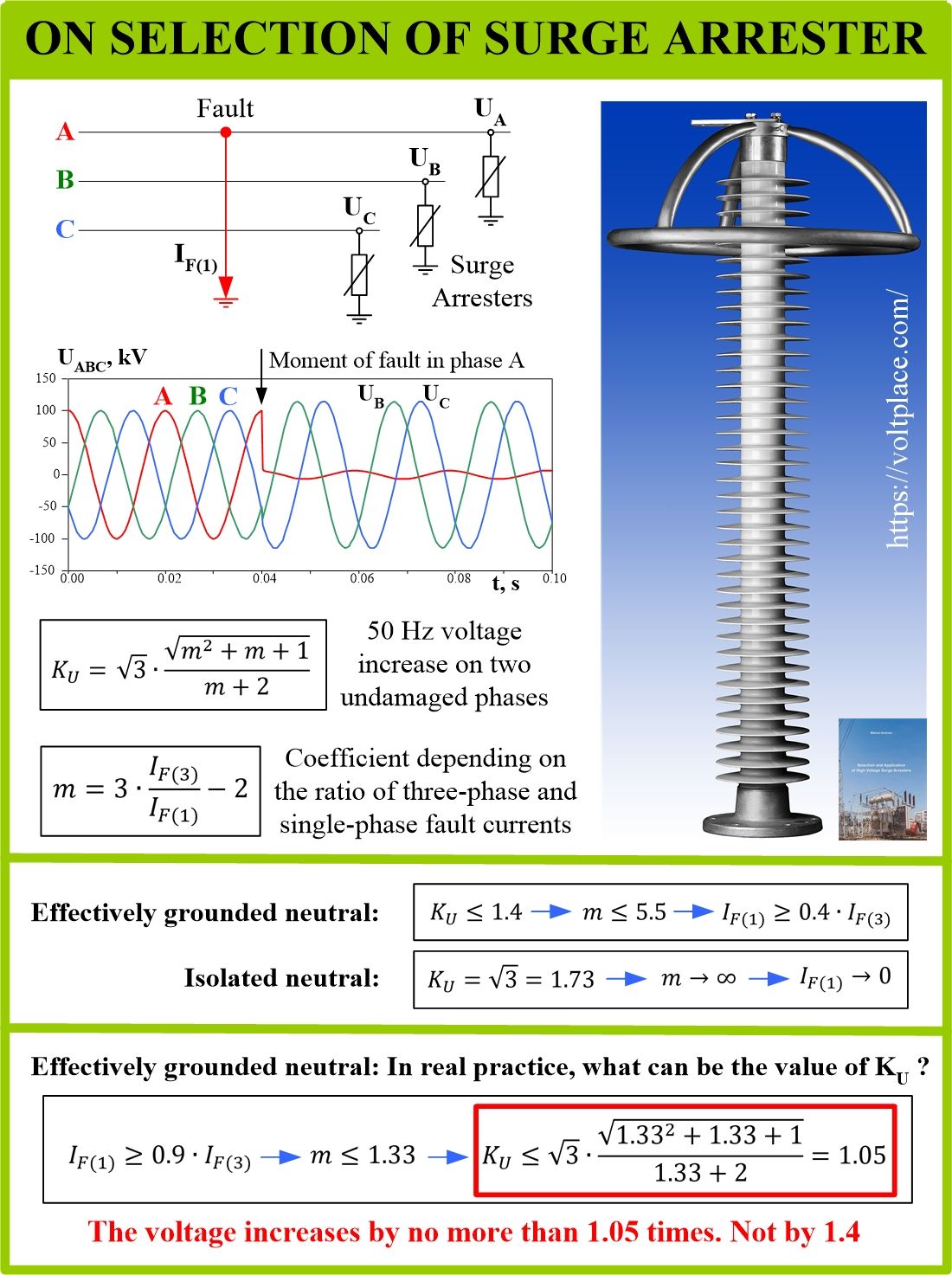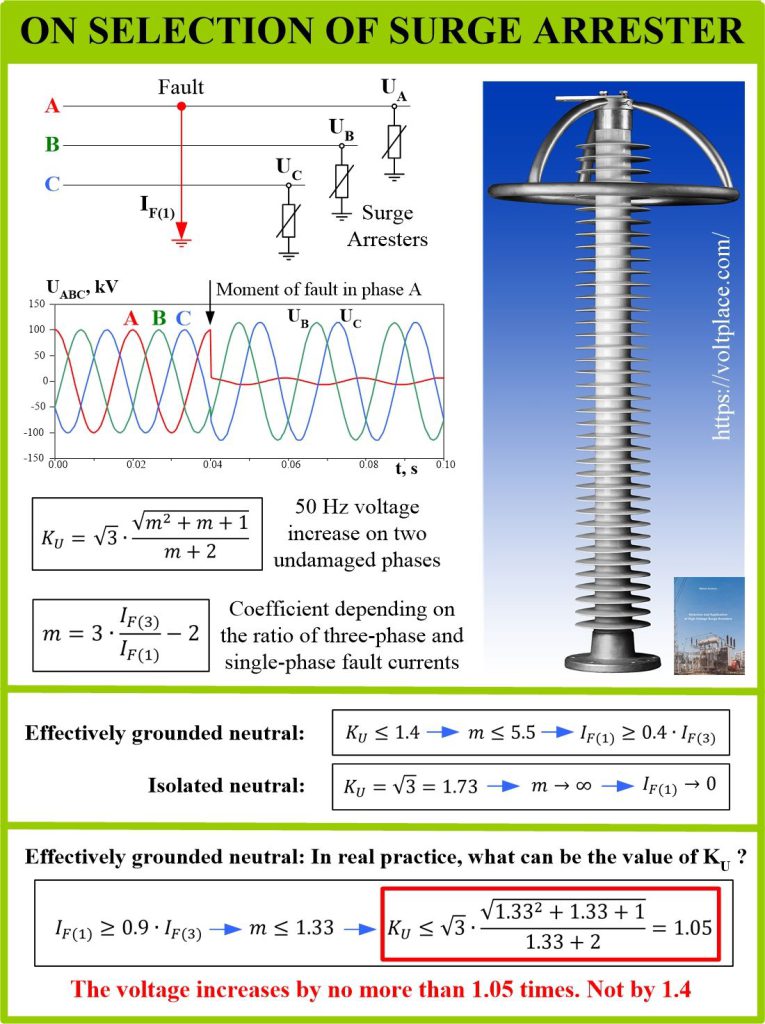
On selection of surge arrester
Let us continue with a series of green posts on transients and surge arresters. Today let us assume that, in three-phase network, a single-phase-to-ground fault occurs, in phase A. In this case, the 50 Hz voltage on the two undamaged phases B and C will increase compared to its normal value. Compared to normal operation, the number of times the 50 Hz voltage of the undamaged phases increases is called the “fault coefficient Ku” (this parameter may be called differently in different countries).
It is known that:
✅ In networks with an effectively grounded neutral, Ku is less than 1.4.
✅ In networks with an isolated neutral, Ku is 1.73.
However, how can the value of this coefficient (Ku) be determined for a specific network with an effectively grounded neutral? To do this, it is enough to follow the simple algorithm:
1️⃣ Find out the currents of single-phase (If1) and three-phase (If3) fault currents (they are usually known for any point of the network).
2️⃣ Calculate the coefficient “m”.
3️⃣ Calculate the coefficient “Ku”.

Let us look at an example. Personally, the author of this post, in 25 years of professional activity, have not encountered a single 110-220 kV network with an effectively grounded neutral, where the current of the single-phase short circuit (If1) would be less than 0.9 of the current of the three-phase short circuit (If3). From here we find m=1.33, which gives Ku<1.05.
Thus, it can be seen that in real 110-220 kV electric networks with an effectively grounded neutral, the voltage on the undamaged phase increases only by no more than 1.05 times. Very important that the voltage doesn’t increase by 1.4 times (this value is taken from the definition of “effectively grounded neutral”).
Such an increase of 5% is observed during the time which is necessary to switch off the faulty section of the network, that is, the time hardly exceeds 1-3 seconds.
So, why do we need all of this? The fact is that when selecting the operating voltage of surge arresters for 110-220 kV networks with effectively-grounded neutral, some engineers use an increase in the 50 Hz voltage by 1.4 times as one of the calculation cases. And they use 10 sec as the time of such a mode.
Today, for 110-220 kV networks, we have shown:
✅ The voltage does not increase by 1.4 times, but only by no more than 1.05 (5%).
✅ The voltage does not rise for 10 seconds, but for no more than 1-3 seconds.
Any surge arrester can withstand the 50 Hz voltage rise by 5% for hours. Therefore, single-phase fault should not be even considered when selecting the arrester in networks with effectively grounded neutral.
Thank you for reading.
